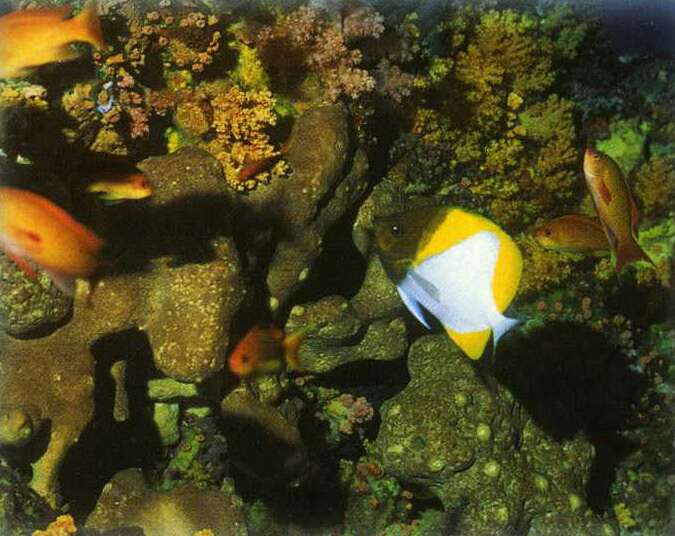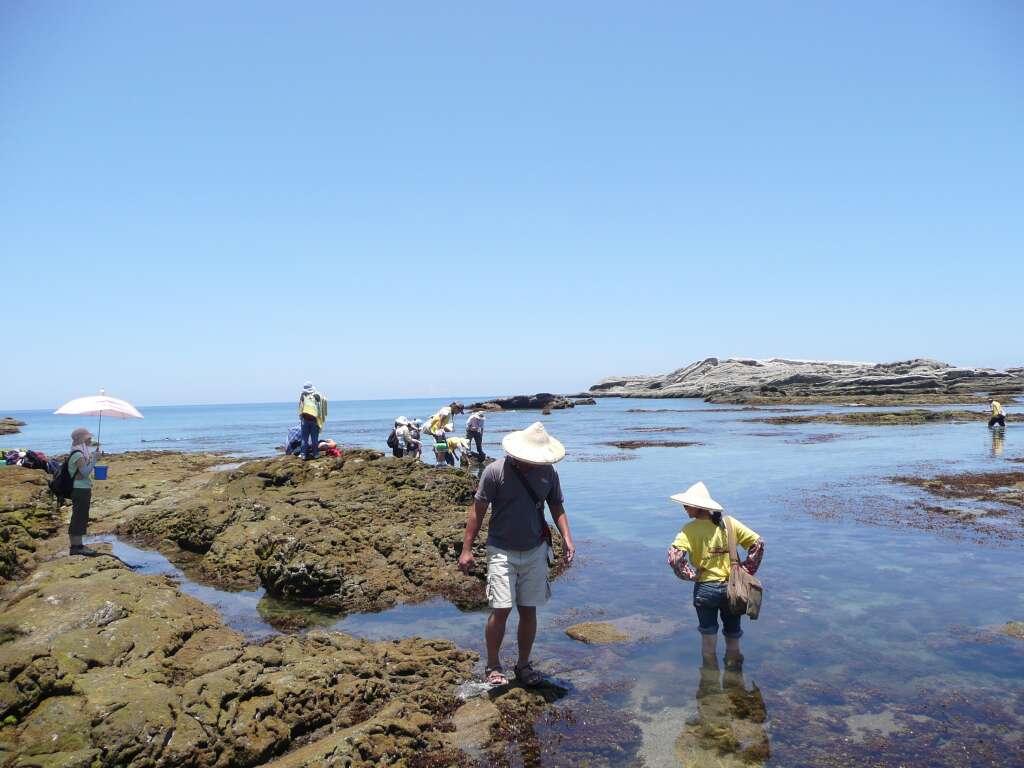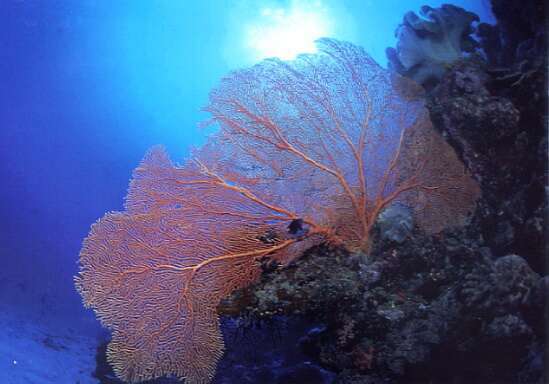For diving activities, there are the well-known Da Bai Sha, Shilang, Chai Kou on Green Island. Chai Kou and Shilang are the areas for beginner divers. The Kuroshio Current flows northward near the Shilang diving area. The coral reefs on the shore and the coral reefs in the shallow bay are closely connected. The intertidal zone has an active ecosystem with precious hard and soft corals and small fish swimming in between, which creates an elegant undersea scene. Every April, you can see schools of flying fish jumping on the surface of the sea, and the beauty of this tranquility is fascinating. Hualien’s Shitipin has the most beautiful coral reefs on the east coast, and is suitable for diving.
Shilang Diving Area
Since the Kuroshio Current flows northward in the nearby area, the waves are more stable than Da Bai Sha. There are diverse atoll coral reefs, rendering the place a world-class diving paradise. It is also the most famous and convenient snorkeling spot. The coral reefs on the shore and the coral reefs in the shallow bay are closely connected. Meanwhile, the intertidal zone has an active ecosystem with precious hard and soft corals and small fish swimming in between, which creates an elegant undersea scene. Every April, you can see schools of flying fish jumping on the surface of the sea; the beauty and tranquility are fascinating.
Shitiping
Shitiping is located south of Fengbin Township, Hualien County. If you travel along Provincial Highway 11, you will see the magnificent mountain and sea views along the way. Shitiping has the most beautiful coral reef landforms and oceanic trenches on the east coast. The ocean is clear and transparent. The animals in the water are highly visible and there is also an abundant coastal ecosystem, rendering the place a perfect destination for diving activities.
Chaikou Diving Area
In the intertidal zone between the offshore area and large coral reefs, the sea has different levels. The coral reefs are everywhere under the sea, while the area between the offshore ocean floor and large coral reefs comprises coral reef platforms. The corals covering the reefs are mainly clumped and encrusting corals. After snorkeling, you can observe creatures in the intertidal zone; there, you will find seaweed, sea urchins, and starfish. Da Bai Sha Diving Area: It is a white beach composed of corals and seashells. The ocean depth along the shore is more than 20 m. Also, many large coral reefs are found there and protrude out of the water. On the sea surface 50 m and 250 m from the shore, you will see two places with the marks of large coral reefs. Due to the diverse coral-based landforms, there are gigantic scattered clumped corals. When diving into the coral caves, you will see plentiful beautiful marine life.
Information
Diving Information
When the strong wind from the southwest strikes Green Island from June to August every year, it is advisable to go snorkeling in the Chai Kou Snorkeling Area since it is on the sheltered side. Apart from the well-known Da Bai Sha, Shilang, and Chai Kou on Green Island, East Coast National Scenic Area of Tourism Administration also built paths leading to the ocean for divers and snorkelers. These paths are meant to protect the reefs covered by corals from human impact.
Precautions
- Do not go diving after drinking alcoholic beverages.
- Before you dive into the water, you must first check the effectiveness of your equipment and make sure you know how to use it.
- When going scuba diving, you must follow the scheduled diving plan. The maximum depth to which you dive must not exceed the level for which you are trained and your experience.
- Before you dive into the water, you must first assess the waves, water temperatures, direction of tides, flow rate, landforms, and geological features. Or you can ask an experienced local diver to explain the diving conditions of the spot.
- When joining activities provided by a company, make sure the company is certified and covered by a public liability insurance policy (personal death/injury benefit should be more than NTD 3 million). Also check the effectiveness of the provided safety equipment.
- Those who go scuba diving must have taken diving lessons and obtained certification. You must go in pairs. Do not go scuba diving by yourself. Also, you must put up a scuba flag in the diving area for safety.
- Expectant mothers and those with heart problems, high blood pressure, epilepsy, or asthma, are advised not to dive. Please evaluate your own health and physical condition first to see if you are suitable for diving.
- If you join a scuba diving activity provided by a company, the coach must hold a diving coach certificate issued by a domestic or foreign diver certification organization (one coach can only guide up to 8 people).
- Do not hunt fish, shells, shrimps, crabs, and mollusks. Do not damage or trample on the coral reefs at sea.
- Do not touch any unknown marine life.
- Do not violate the restrictions on the areas, times, and activities stipulated by the authority governing the recreational activities in that sea area.



